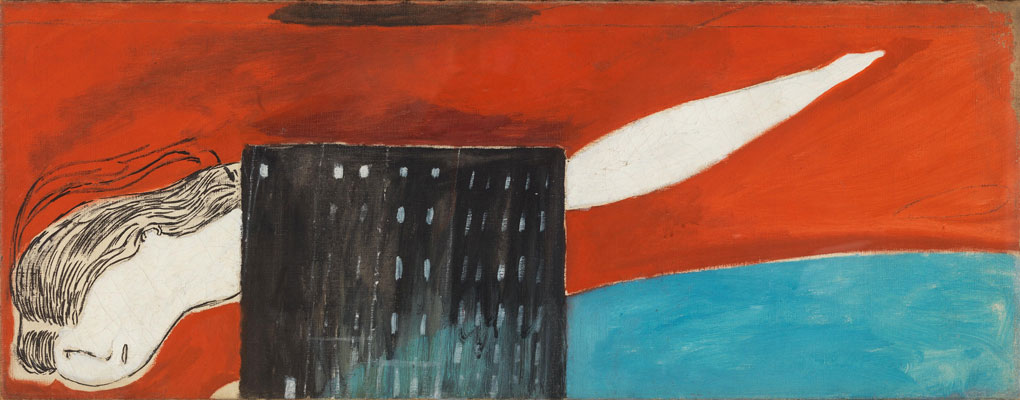Barkley L. Hendricks: Portraits at the Frick

From September 21, 2023, through January 7, 2024, the Frick Collection celebrates and explores the remarkable work of pioneering American painter Barkley L. Hendricks (1945–2017)
Source: Frick Collection · Image: Left: Barkley L. Hendricks, “Self-Portrait with Black Hat”, 1980–2013. Digital C-print. 27 3/4 x 18 3/4 inches. Jack Shainman Gallery, New York © Barkley L. Hendricks Courtesy of the Estate of Barkley L. Hendricks and Jack Shainman Gallery, New York. Image via Frick Collection *work not featured in the exhibition * // Right: Barkley L. Hendricks, “Lawdy Mama”, 1969. Oil and gold leaf on canvas, 53 3/4 x 36 1/4 inches. The Studio Museum in Harlem, New York; gift of Stuart Liebman, in memory of Joseph B. Liebman. Image via Frick Collection.
Hendricks revolutionized contemporary portraiture with his vivid depictions of Black subjects derived from photographs of hired models or figures he encountered on the street. Beginning in the late 1960s, his work drew from and challenged traditions of European art, and The Frick Collection—with its iconic portraits by Rembrandt, Bronzino, Van Dyck, and others—was one of his favorite museums. Through a selection of some dozen of Hendricks’s finest portraits displayed in the context of the Frick’s holdings, the exhibition and its accompanying catalogue considers the complex place of European painting in Hendricks’s art and how his work, in turn, continues to inspire major artists and designers today.
Frick’s Curator Aimee Ng comments: “The Frick offers stirring encounters with figures painted centuries ago. As our temporary display at Frick Madison has shown, these works can look and engage visitors so differently outside of the Frick mansion, in the Brutalist setting of the Breuer building. Here, many of our visitors are new to the Frick, a revelation that has prompted reflection on who the Frick serves, has served, and will continue to serve. This project–the first major museum exhibition and catalogue to focus solely on Hendricks’s early period of portraiture–allows us to consider connections the Frick has made with artists since it became a public museum in 1935. Hendricks’s astonishing portraits of predominantly Black figures, not represented in the Frick’s historic paintings yet who, with their self-assured style, appear right at home among them, grants unprecedented opportunities to celebrate and explore the Frick’s collection, Hendricks’s groundbreaking innovations, and the bridges between them.”
Consulting Curator Antwaun Sargent adds: “When Aimee and I first began speaking about the Frick and its place in today’s world, I suggested an exhibition on Barkley L. Hendricks—obviously because of his interest in historic art as he developed his own style of portraiture of Black subjects, but also because the quality, dignity, and visual impact of his paintings are what I would think Henry Clay Frick might be drawn to if he were collecting now, thinking of future visitors to the museum in another hundred years. The catalogue accompanying the exhibition is an exciting way to highlight and reflect on Hendricks’s own legacies, how he has inspired generations of artists and designers and still does today. Presenting Hendricks’s art at a storied institution like the Frick pays due tribute to the historic significance of Barkley L. Hendricks, and it also honors the evolving role of the Frick in modern American culture.”
Follow us on:


